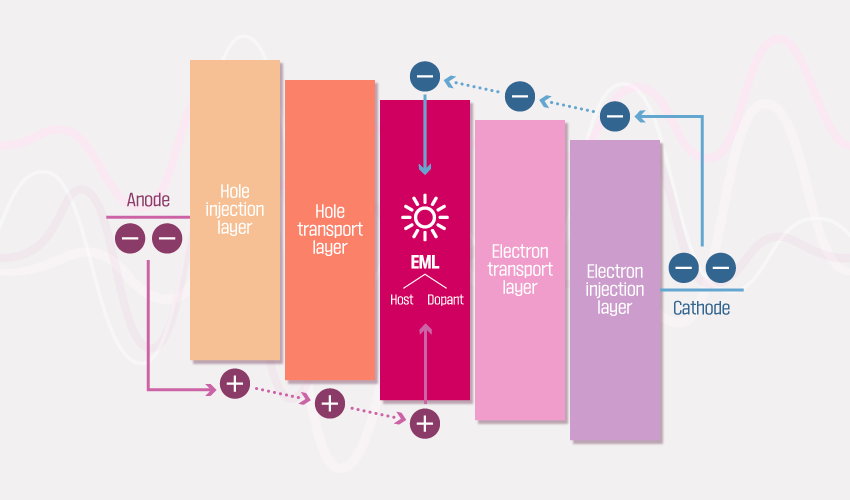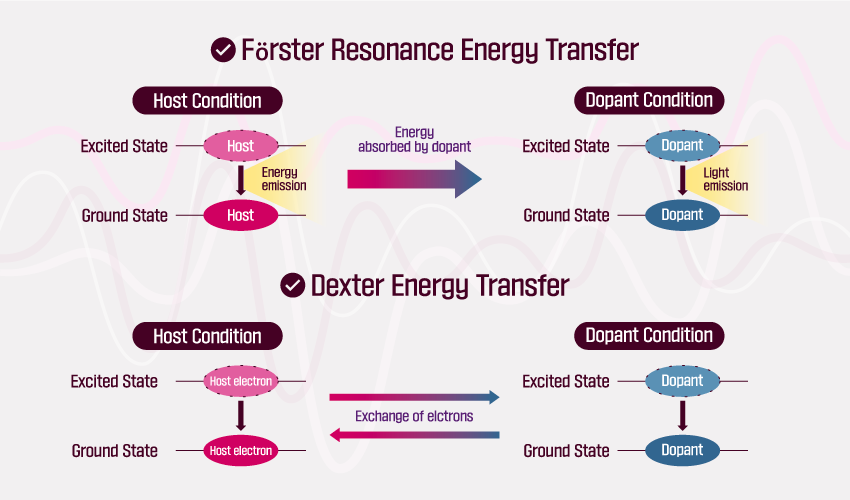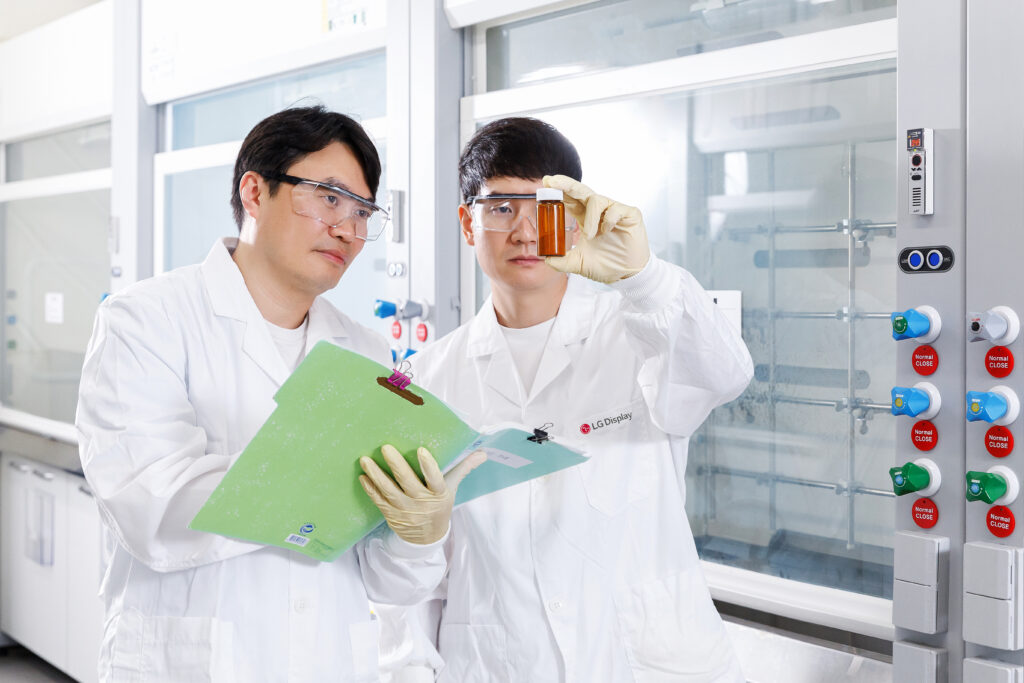DISPLAY 101
#28 Dopant

| Dopant: Material added to the OLED emissive layer to enhance efficiency, stability, and color purity |
Dopants are instrumental in achieving brighter light using less energy, extending the lifespan of light emitting displays, and enhancing color purity of OLED. Let’s dive into what dopants are, and how they are utilized in the OLED luminescence process.
Dopants give life to OLED’s luminescence

Before we delve into the world of dopants, it’s essential to understand the process through which OLEDs emit light. In simple terms, OLEDs generate light by applying current to the panel, causing positive (+) and negative (-) charges to be injected from the electrodes through various layers, which eventually converge in the emission layer (EML) to produce light.
The emission layer, which comprises of hosts and dopants, plays a critical role in facilitating the generation of excitons, making sure the electron-hole pairs combine effectively. Dopants, on the other hand, receive these excitons to allow them to emit light efficiently, thus enhancing the overall luminescence.

How do hosts and dopants create light specifically? We revisit concepts covered in the previous Display 101 on Fluorescence and Phosphorescence, this time from the perspective of these two materials.
In fluorescence, the host absorbs energy from excitons formed by the combination of electrons and holes. These excitons become excited and, as they return to the ground state, release the absorbed energy in the form of light. The energy emitted by the host is then transferred to the dopant, where it is then absorbed and emitted as light. This process is also known as Förster Resonance Energy Transfer.
In phosphorescence, hosts and dopants exchange electrons, facilitating the transfer of energy, which ultimately results in the dopant emitting light. This process is referred to as Dexter Energy Transfer.

In a recent development, a specific type of dopant and a critical OLED material known as ‘p-Dopant’ was successfully self-developed by LG Display through a collaborative effort with LG Chem. P-Dopant plays an important role in elevating brightness efficiency and extending an OLED display’s lifespan and is regarded as the most challenging material to create in terms of technical complexity. Thanks to LG Display’s innovative and cutting-edge technology, the company has established a stable supply chain in the global OLED market!









